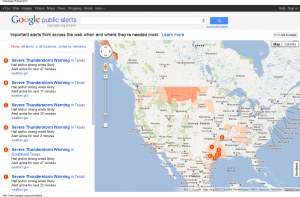Receiving timely information regarding a disaster whether man-made or natural can mean the difference between life and death for you and your family. In an information age, the number of sources of disaster information is endless.
In this article, I would like to share a few of the best ways to receive disaster information.
The Television has been with us forever and a day. Everyone has one, everyone knows how to turn on and tune in. In the event of a disaster the oldest disaster alert system, EAS (emergency broadcast system) will be activated providing information for your area. All that is required to receive a broadcast is a TV and of course power.
Cellular Phones, nearly everyone in the US from 5 years to 100 years old has a cell phone. Many of us find it difficult to live without one of these devices. In the event of a disaster, this unfortunate addiction could save our lives. Nowadays, there are free and/or cheap apps or services that allow us to keep an ear to the disaster track. The Pacific Disaster Center and Alert USA for example offers a mobile apps to keep you informed.
AccuWeather also offers apps that keep you aware of severe weather in your area. I personally have kept my family safe through the use of this app which made me aware of approaching severe thunderstorms which eventually killed several people by way of straight line winds.
The World Wide Web or the internet is now the method most folks use to get all sorts of information ranging from who’s dating who to the latest on a fast approaching wild fire. Google recently rolled out a new disaster awareness initiative called Google Public Alerts.
How it works is Google does what Google does best, pull in information from multiple sources and presenting an easy to understand presentation that will tell you what’s going on anywhere in the world from Timbuktu to your back yard.
Learn more about Google Public Alerts
Radios are one of the oldest, most reliable forms of communication on the planet. Radios are indispensible as a source of disaster alerts. Disaster alert radios can be programmed to wake you in the middle of the night to alert you of an approaching tornado or other local disasters you may have slept through.
Radios in my opinion are the best source of Hazard Alerts in that they are relatively inexpensive some of which operate by hand crank or solar power.
Disaster planning should include multiple methods of receiving information should one source fail. In the event of a localized disaster, you may find cell phones won’t work a landline which to some seems like an unnecessary expense will come in handy when checking in on loved ones.
In the event of a power outage, you may find your access to the internet or TV impossible making it absolutely imperative you have a working hazard alert radio and back up batteries.
